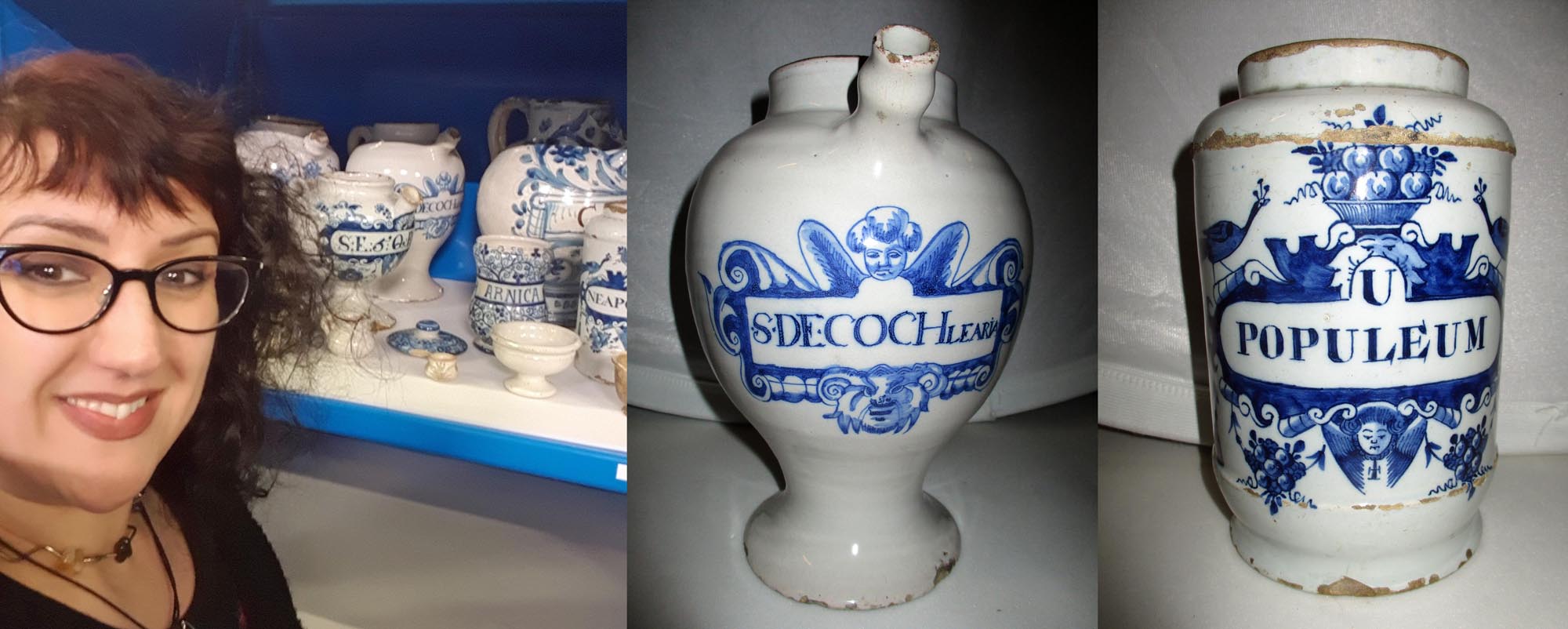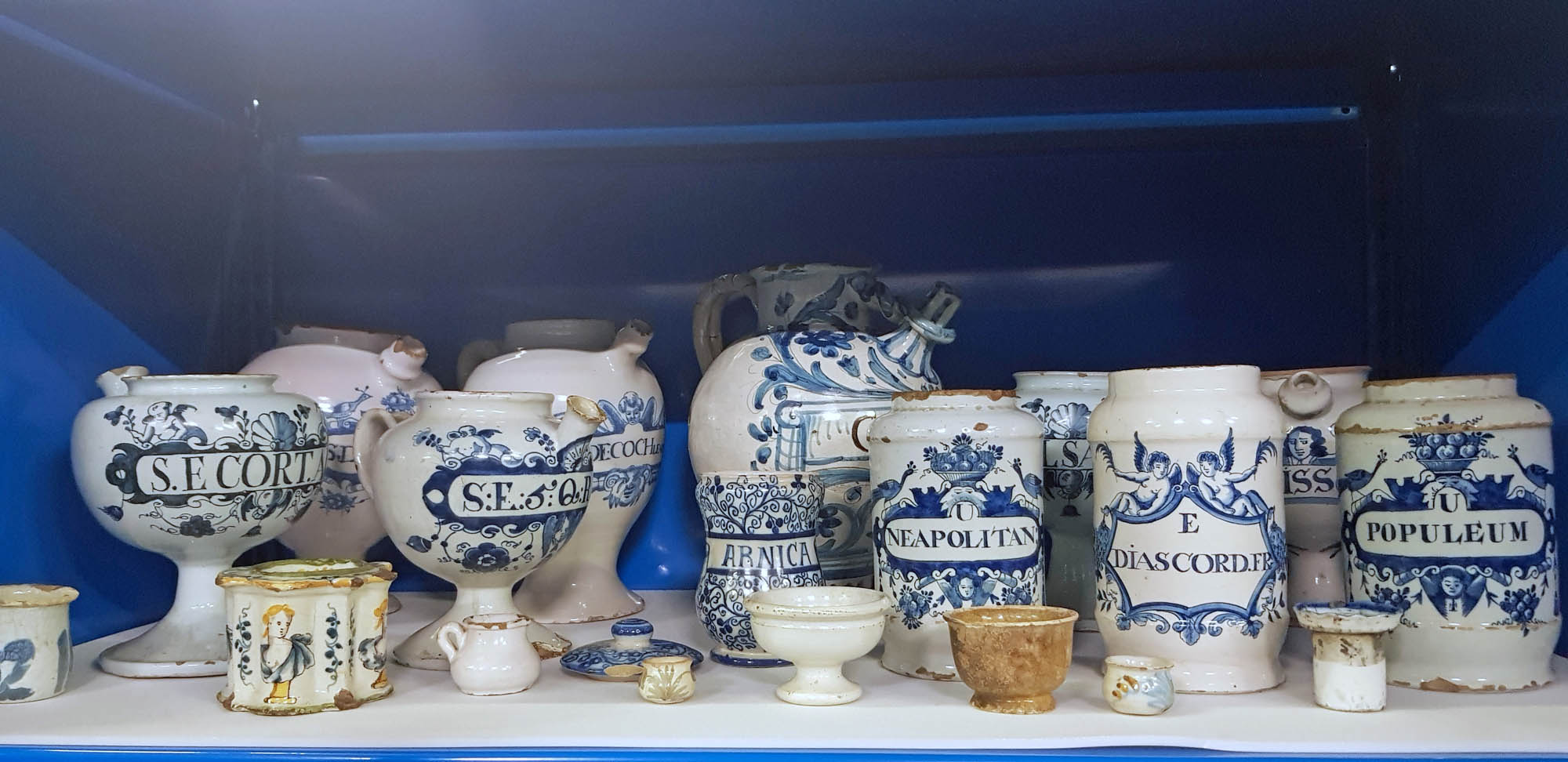What's In Store... Drug Jars
What's in store... interesting objects from Leicester Museums & Galleries Stores.
Published: 4 June 2020

Collections Officer Shani working in the store.
Shani, Collections Officer
A lot of time is spent instore, moving, checking and cataloguing objects, examining the condition of objects (ensuring there is no change and that our environmental controls are doing what they should) and generally ensuring the well being of the items in our care.
During one such routine relocation and examination I came across this small collection of 18th century Delftware Drug Jars.
Delftware was produced from the 16th century onwards and the name came from the city of Delft in the Netherlands although in this case it describes a particular type of pottery, not where it was made. The pottery was tin glazed earthenware also known as Gallyware, and it produced a clean, white finish. The distinctive, blue, decorative patterns were created using Cobalt oxide. English Delft ware was produced in Liverpool, Bristol, Norfolk and London and some of the jars in our store have a Lambeth made mark on the base.
Drug jars would have been a common sight in Apothecary shops and were displayed by chemists into the 19th century.
Drug jars are easily recognisable as they have a decorative cartouche on the front with the name of the contents in the centre in abbreviated Latin. They will often be prefixed by a letter representing type of preparation, for example; ‘E’ stands for Elixir, ‘U’ is an unguent (or Unguentum - a type of cream), ‘C’ is a conserve, ‘Ol’ is oil, ‘S’ - syrup and ‘Mel’ - a preparation suspended in a base of honey.
This letter may be positioned above the contents name or alongside it. This is often an indication as to whether it was made in the UK or on the Continent. In the UK the letter was often directly in front of the name, whereas European jars had the letter centrally positioned above it.

One of our jars is titled S.E.5.Q.P. This indicates it contained syrup of the five roots - butcher's broom, sweet fennel, asparagus, parsley and smallage (wild celery) and appears to have been a common preparation used for Jaundice and disorders of the kidney.
The jars came in different styles that were appropriately shaped for their contents. Pedestal jars with a spout and handle contained pourable liquids. Dry ingredients were kept in barrel shaped jars – a bit like a biscuit tin, some had metal lids but often they were designed to be sealed with parchment.
The designs around the cartouche can also be very elaborate with Cherubs, birds, Green men and foliage around the outside. The cartouches became more elaborate as time passed and this can often give an indication of age earlier designs tended towards simpler, plainer cartouches.
All of the jars have now been safely relocated into their new home in the ceramic cabinets and I think they look rather handsome.
References:
